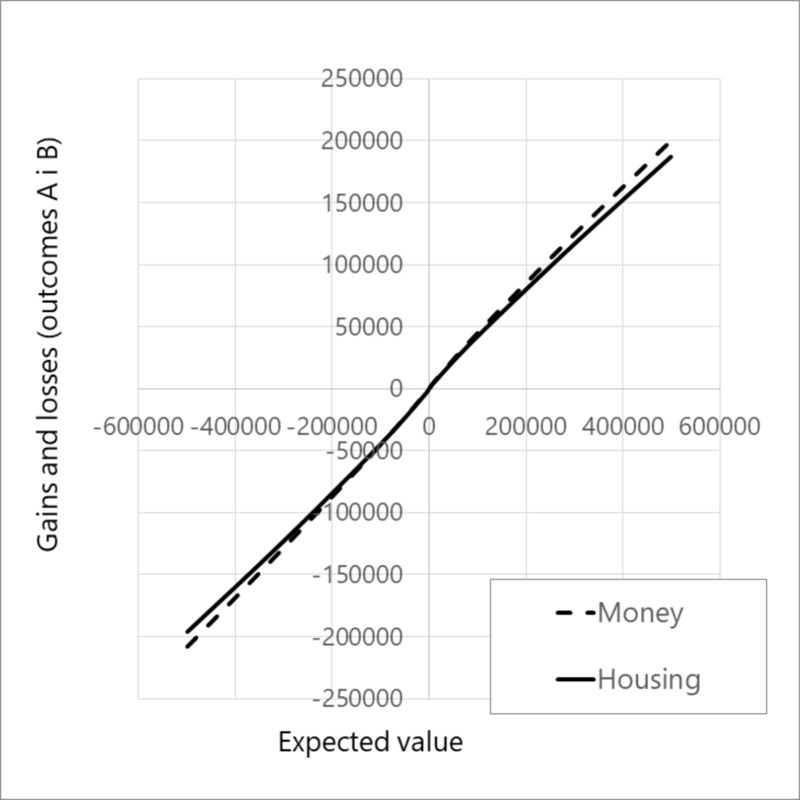Current issue
Online first
Archive
About the Journal
Aims and scope
Editorial Board
International Editorial Board
List of Reviewers
Abstracting and indexing
Ethical standards and procedures
REMV in Social Media
Contact
Instructions for Authors
Instructions for Authors
Manuscript formatting template
Title page
Highlights
Payments
‘Ghostwriting’ and ‘Guestauthorship’
Guidelines for Referees
Editor's Choice
Estimation of the utility function of money and housing based on the cumulative prospect theory
1
Uniwersytet Warmińsko-Mazurski w Olsztynie, Poland
2
Cracow University of Economics, Poland
Submission date: 2023-03-02
Final revision date: 2023-04-23
Acceptance date: 2023-05-31
Publication date: 2023-09-07
REMV; 2023;31(3):83-92
HIGHLIGHTS
- we estimate the utility function of cumulative prospect theory for money and housing
- we obtain concave function in the gain domain and convex in the loss domain
- the differences in the lambda parameter denoting loss aversion were not significant
- the value of the utility function was somewhat higher for money than for housing
KEYWORDS
TOPICS
ABSTRACT
This article addresses the issue of the utility of money and the utility of housing with a value equivalent to that amount of money. The literature provides many reports on the shape of the utility function for money, but much less research has been devoted to the utility function for housing. The aim of this study was to estimate the utility function of money and housing according to the cumulative prospect theory (CPT) developed by Tversky and Kahneman (1992). Parameters alpha (α), beta (β), and lambda (λ) were estimated to compare the utility value of money and housing. The most important conclusions of the study are as follows: parameters alpha and beta were greater than 0 and less than 1 for both housing and money. Function v(x) was concave in the gain domain and convex in the loss domain, which is consistent with the CPT. The differences in the lambda parameter denoting loss aversion were not significant, and the value of the utility function was somewhat higher for money than for housing. This study was undertaken to estimate the CPT parameters for housing, which, according to the authors' best knowledge, has not been investigated to date.
Share
RELATED ARTICLE
We process personal data collected when visiting the website. The function of obtaining information about users and their behavior is carried out by voluntarily entered information in forms and saving cookies in end devices. Data, including cookies, are used to provide services, improve the user experience and to analyze the traffic in accordance with the Privacy policy. Data are also collected and processed by Google Analytics tool (more).
You can change cookies settings in your browser. Restricted use of cookies in the browser configuration may affect some functionalities of the website.
You can change cookies settings in your browser. Restricted use of cookies in the browser configuration may affect some functionalities of the website.




